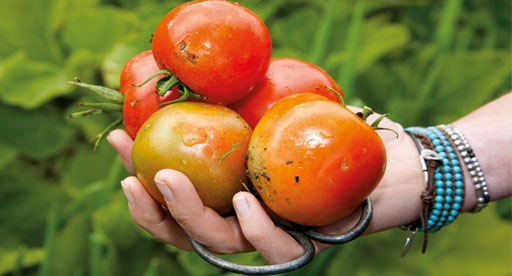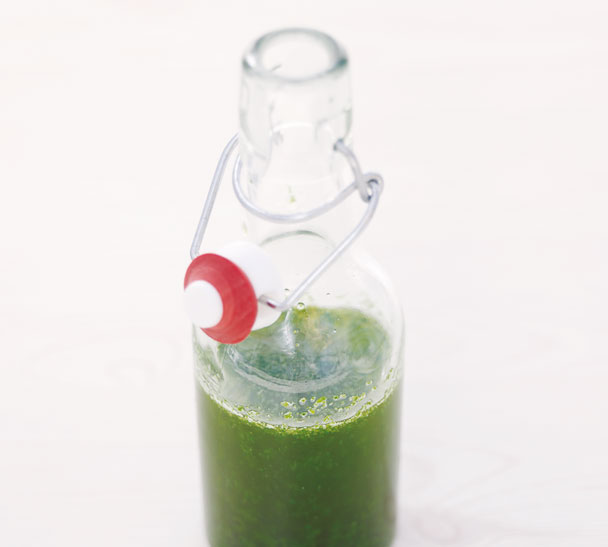
We’re coming up to that wonderful time of year when the summer’s harvests start pouring in. For a while there you think nothing’s happening and then whammo, almost overnight, all that hard work you put in back in spring starts paying divvies, big time! Now there’s not just the odd thing to pick here and there but veritable deluges of ripe produce – tomatoes, cucumbers, beans, corn, zucchini, salad greens and herbs. It’s hard to keep up!
Shopping list
All the leafy greens like spinach, silverbeet, lettuces and rocket don’t take long to mature, which is why you get to enjoy them in the spring. But the long-lead crops (which account for almost everything else in the garden at this time of year) require the plant to fruit, so it can take three or even four months from seed until they are ready to harvest.
Once you start harvesting, you need to keep picking. This is the trick to extend the season to the max. What you can’t use yourself, give away or put into preserves, but don’t stop picking, as otherwise the plant thinks its job is done and, with its seed safely set for the next season, it stops flowering and producing.
Up to mid January it’s possible to keep topping up the garden with plantings of long-lead crops like zucchini and even beans, but by now it’s too late for tomatoes, peppers or slower growing eggplants. I do plant a late crop of potatoes in the last week of January, and that way we get to enjoy a harvest of new spuds as late as Easter. These later plantings don’t tend to store very well (you need a hard, mature skin on the potato or it sprouts again quite quickly), so don’t rely on them for your main crop winter stores.
To avoid water stress you need to water deeply every three or four days, so if you’re going away, make sure you enlist a friendly neighbour and thank them with some delicious harvests. In terms of stone fruit trees, as soon as they finish fruiting you need to cut off the water supply to start hardening them off before the weather cools down. If they go into winter with too much sap they’re much more likely to suffer frost damage come spring when their sap starts rising again.
Back in spring I planted a salad box garden as a Tui Garden Project for my TV series Through the Seasons. After the first full harvest was over I pulled out all the plants and rejuventated the soil with more compost, sheep pellets and fertiliser. When you plant as densely as I like to in a planter box, it’s really important to keep replenishing the nutrients, so don’t be light-handed with the plant food. Some SaturAid is also good to help hold on to water.
Before I plant the box out again I always give the soil a really good soak and then soak and water in the new seedlings with Tui Organic Seaweed Plant Tonic, giving them a good soak again with this fabulous seaweed-based plant tonic every three to four weeks (don’t use it every week). Tui Organic Seaweed Plant Tonic also comes to the rescue when plants are stressed so if you do arrive home after the holidays to a less-than-perky looking garden, a good water with diluted Tui Organic Seaweed Plant Tonic is the best chance of rescue, as it will give the roots the protection they need.
It has been amazing to see my Three Sisters Tui Garden Project come to fruition this summer. The corn is ripening, the beans producing and the squash are rambling all over the soil keeping the weeds at bay and the soil nice and moist. Out of all the garden projects we made for the TV series, this one, with its ties back to ancient growing systems of the early MesoAmericans, has been the most satisfying, delivering a wonderful sense of provenance and connectedness. Knowing that people have been growing this way for thousands of years is a wonderful reminder that we too are connected to those cycles and rhythms of nature, and something as simple as this has supported mankind forever. But I guess that’s the wonderful thing about growing some of your own food – no matter where or what, the seeds you plant have their own legacies and have nourished us for generations.
Annabel Langbein's Basil Oil
I like to make this flavoured oil in summer when the basil is at its peak and freeze it to drop into winter soups and stews. The same method also works with other soft herbs. 
Prep time 5 mins
Makes 1½ cups
Ingredients
- 2 packed cups (60g) basil leaves
- ½ tsp salt
- 1 cup oil, such as olive oil or grapeseed oil or a mix of both
Method
- Place basil leaves in a bowl and cover with boiling water to wilt.
- Drain at once and refresh under cold water.
- Drain thoroughly and purée with salt and oil until smooth.
- Strain off solids through a fine sieve if desired (I don’t bother)
- Keep in the fridge up to 4-5 days or freeze in ice block containers.
Read more of Annabel's guest blogs here
Post a comment
Annabel Langbein's Summer Bounty Comments
I've been making this fabulous Basil Oil since it's publication in last year's book. It's the 5% magic with my Avocado on Vogel's toast with Lemon pepper seasoning and served with fresh Tomato Salsa, also blended with the wonderful Basil Oil. My guests all LOVE it!
Bev Fothergill
That's fantastic Bev, thank you for your feedback :) Jenna, Tui Team
jenna
Would I be able to use coconut oil in this recipe? I use olive oil mostly for cooking etc, but would like to know if changing oils would effect the taste too much?
Anna
Hi Anna, Annabel's team has answered with the response below: Coconut oil tends to solidify at room temperature so you might need to use a mixture of coconut oil and olive oil. Flavourwise coconut and basil might be a little odd, but maybe coconut and coriander or other Asian herb would work? Thanks, Tui Team
jenna